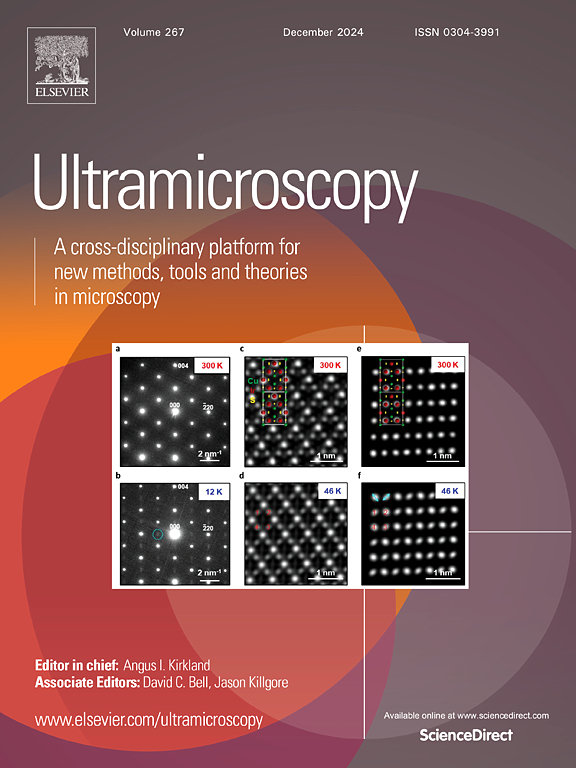Resonant scattering in low energy electron diffraction: Bi/Ni(111)
IF 2
3区 工程技术
Q2 MICROSCOPY
引用次数: 0
Abstract
We report Low Energy Electron Diffraction (LEED) diffraction patterns measured at energies up to 50 eV for a monolayer thick Bi film on Ni(111). Surprisingly, the intensity versus energy profiles of several from the ten unique (i.e., symmetry-independent) sets of spots show finite but pertinent intensity, each only at a well-defined energy. These are attributed to resonant scattering, involving transient capture in eigenstates of the image potential, followed by (multiple) scattering into the vacuum. By its nature, transient capture occurs closely before the energy crosses the Ewald sphere for each considered channel. These energies are one-to-one connected with the corresponding lattice parameters of the Bi-film with its centered rectangular structure, commensurate along Ni[11–2] and high order commensurate along Ni[-110].
In addition, a couple of more intense regular spots show anomalously high intensity at the low energy side upon crossing the Ewald sphere. This feature is attributed to resonant scattering as well. We claim that so far grossly disregarded resonant scattering is a general phenomenon and should be considered in very low energy LEED-IV structural analysis.
The intensity versus energy profile of the (0 2) peak does not show obvious evidence for resonant scattering but instead reveals that the Bi film is built up by long (> 20 nm) and narrow (<< 20 nm), translationally shifted domains, oriented along the [-110] azimuth.
低能电子衍射中的共振散射:Bi/Ni(111)
我们报道了Ni(111)上单层厚Bi薄膜在能量高达50 eV时的低能电子衍射(LEED)衍射图。令人惊讶的是,十个独特的(即,对称无关的)光斑集合中的几个的强度与能量分布显示有限但相关的强度,每个只在一个定义良好的能量。这些都归因于共振散射,涉及图像势的本征态的瞬态捕获,随后(多次)散射到真空中。就其性质而言,瞬态捕获发生在能量穿过每个通道的埃瓦尔德球之前。这些能量与具有中心矩形结构的双膜相应的晶格参数呈一一对应关系,沿Ni[11-2]成正比,沿Ni[-110]成高阶成正比。此外,一对更强烈的规则斑点在穿过埃瓦尔德球时,在低能侧表现出异常的高强度。这一特点也归因于共振散射。我们认为,到目前为止,被严重忽视的共振散射是一种普遍现象,应该在极低能量的LEED-IV结构分析中加以考虑。(02)峰的强度-能量分布图没有显示出明显的共振散射证据,而是表明Bi膜是由长(>;20 nm)和窄(<<;20 nm),平移位移域,沿[-110]方位角取向。
本文章由计算机程序翻译,如有差异,请以英文原文为准。
求助全文
约1分钟内获得全文
求助全文
来源期刊

Ultramicroscopy
工程技术-显微镜技术
CiteScore
4.60
自引率
13.60%
发文量
117
审稿时长
5.3 months
期刊介绍:
Ultramicroscopy is an established journal that provides a forum for the publication of original research papers, invited reviews and rapid communications. The scope of Ultramicroscopy is to describe advances in instrumentation, methods and theory related to all modes of microscopical imaging, diffraction and spectroscopy in the life and physical sciences.
 求助内容:
求助内容: 应助结果提醒方式:
应助结果提醒方式:


